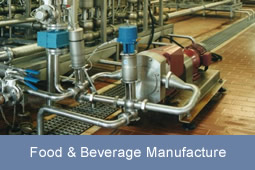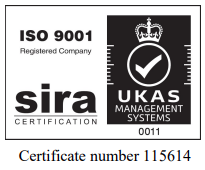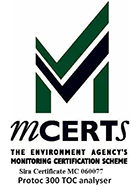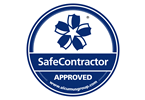Instrument selection is critically important
The need for the water industry to become progressively more efficient has driven an increased level of process automation. The installation of on-line instrumentation should allow operators to optimise their treatment processes. There are many examples were continuous measurement has reduced energy consumption, minimised chemical usage and improved compliance. Equally, there are also many instances where these objectives have not been fully realised.
With increased instrumentation use, there is now an inevitable dependency on the data generated from these on-line devices. The correct instrument selection is therefore of paramount importance. Data needs to be representative. The amount of instrument maintenance to support the installation needs to be realistic.
All the key factors affecting appropriate instrument selection should be considered before committing to an extensive installation program that may turn a potential asset in to a subsequent liability!
Sounds obvious? However, many decision makers have either not committed the necessary time to properly evaluate what instrumentation best matches their requirement or they have not fully understood, the subtle design features that differentiate product.
It is true that with hindsight, many bad decisions would have not been taken. However, it is equally true that a small amount of upfront research can ultimately save considerable time and expense.
So, how does one select the best instrument for any given application?
There are a number of important steps before a final decision can be made. The selection process has to involve an initial appraisal to short list potential contenders but the evaluation process must finally conclude with a performance evaluation. This should be organised to include short listed product installed at a representative site for an acceptable duration.
However, in the first instance, a detailed application appraisal should help to prioritise the most important key features relative to the intended installation.
Identify key application requirements!
- Does the application require precise measurements or general trending and to what accuracy?
- Should an instrument failure occur how does this impact the process?
- If an instrument suffers calibration drift what is the consequence?
- If monitoring is process critical, what can be done to mitigate risk?
- Is the site manned or is it remote - with infrequent attendance?
- What is the ability to support the proposed instrument installation?
- What level of maintenance is considered acceptable?
- What is the feedback from previous instrument use?
- Are there application specific difficulties affecting calibration and cleaning requirements?
- Are there similar site installations which have overcome identified issues?
Specific sites may also present particular installation considerations. These may themselves affect performance and greatly influence the cost to deliver the monitoring solution. This is where a “one size fits all approach” may not always be the best option. Multiple approaches may therefore be needed.
Probe or analyser water measurement technologies?
Some parameters may only be reported by wet chemistry analyser whilst others may be measured using a probe technology. Increasingly, optical and electro-chemical techniques are being further developed which blur the distinction. Understanding the merits and drawbacks of each and indeed any potential limitations is vital.
Advancements in technology need to be embraced but should also be correctly applied. Nowadays, few would perform Winkler titration to analyse dissolved oxygen concentrations in water when perfectly good sensing techniques are now available. However not all products perform the same. Many have been developed as low cost devices for price sensitive fish farming applications and may not offer the calibration stability and the anti-fouling characteristics, provided by the best available technology. Consideration of factors such as the membrane material and the method used to maintain calibration, still need to be properly evaluated.
Likewise, turbidity and MLSS sensors are also often used in harsh environments for waste-water monitoring. For them to work properly, the optical face needs to remain free of fouling. Sensors with Sapphire measurement windows will help reduce fouling but automatic cleaning may also be imperative. The use of continuous ultrasonic or compressed air cleaning is very efficient and has no moving parts, ultimately improving reliability.
When are bespoke engineered water quality system required?
There are also times when a conventional approach may not work. Long sample runs to instrumentation, located at a distant location may cause poor response times and ghost peaking. Coagulant bound solids can break off pipe walls especially when flow rates are changed. Therefore, the implementation of direct turbidity measurement into the clarifier rather than flow cell measurement may be preferential in these circumstances. Similarly, deposition of lime-scale may require the integration of automatic acid cleaning system and bespoke engineering.
Ammonia measurement is a critical measurement for waste water treatment using biological nitrification. Within process, the installation of probe technology using Ion Selective Electrodes (ISE) has been widely adopted. Unfortunately, many water companies have committed to installing product without proper evaluation. If the instrument provides the wrong measurement data, it is then not possible to reduce energy consumption.
Similarly, many ammonium probes have been installed for final effluent monitoring. In some instances, a probe technology can provide valuable trend measurement data to identify a failing process. However, there are some notable differences in performance between the various makes and models available. Comparative evaluation will identify this.
In other instances, analytical methods providing self validation through automatic calibration may provide greater confidence needed for critical sites with consent at very low ammonia concentrations high-lighting the need for a flexible approach.
Consequently, making trial installations to simultaneously compare short listed technologies is invaluable. Measurement performance, reliability and maintenance can be compared. However, what is also important is to find a truly representative site for evaluation.
Ease of Use
Simplicity of operation and maintenance is the ultimate goal. Do not over-complicate the design! The installation should be as simple as the application allows but embody technology to maintain a reliable operational state. Diagnostic features may also assist. Technicians need to quickly identify what may be wrong so fault finding and maintenance time can be kept to a minimum.
Fit for purpose
It’s worth remembering the best instrument designed for potable water may not be the best design for a raw water or waste-water application and vice versa. Ensure the complete monitoring system is fit for purpose. The robustness of the instrumentation and installation equipment, may also determine long-term suitability.
CAPEX, OPEX and TOTEX
Nowadays, so much emphasis is placed on commercial considerations which are important but can also mislead. The most expensive instrument providing the best measurement data and the least maintenance, may ultimately prove to have the lowest lifetime cost. Furthermore, for process control applications (such as aeration or chemical dosing), instrument performance is more critical (without incurring excessive cost) otherwise the process cost savings will not be fully realised. CAPEX may also be difficult to correctly evaluate. Consumable costs, life of instruments, routine servicing, unplanned maintenance, manufacturer call out charges etc. all need to be considered but evaluation is difficult. Feedback from site-based technicians reporting actual findings rather than working with projected data is preferential. Once instrument standardisation is in place, actual performance should also be regularly reviewed otherwise costs may escalate and performance may suffer. The total life time cost the TOTEX model is in principle a good way to rationalise instrument selection however the calculation often proves very subjective. Too much reliance is placed on data from suppliers rather than taking into account actual experience.
Making the correct installation
Installation is equally as important as the initial instrument selection. Pre-installation into secondary enclosures with sample delivery and preparation systems may be critical to complete a successful installation. The manufacturer may be best placed to provide the engineered solution and may need the assistance of a specialist site M&E contractor. Pre-fabrication may help to standardise on a proven installation format.
Frequency of review
Technology is constantly providing new monitoring solutions, so needs to be constantly reviewed. So many individuals have simply followed their predecessors, installing the norm without considering how latest technology may benefit. The water industry typically takes a very conservative approach to the introduction of new technology but the danger is that this can overlook new product that can positively impact. Consequently, a regular review of latest technology (at least every 5 years) may also be beneficial.
More information? Get in touch!
If you would like more information relating to this product or the services Pollution PPM can provide, please Contact Us.
For International enquiries, please contact one of our dealers listed on the following page - International Dealers








